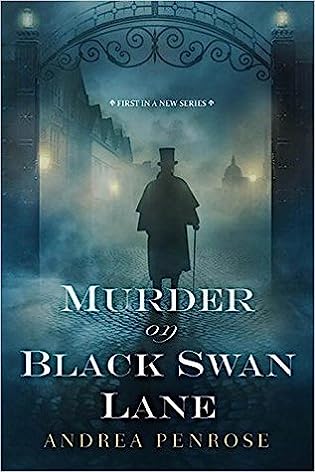 Murder on Black Swan Lane (Wrexford & Sloane, #1) by Andrea Penrose
Murder on Black Swan Lane (Wrexford & Sloane, #1) by Andrea Penrose Format: ebook
Source: purchased from Amazon
Formats available: hardcover, large print, paperback, ebook, audiobook
Genres: historical fiction, historical mystery
Series: Wrexford & Sloane #1
Pages: 340
Published by Kensington Books on June 27, 2017
Purchasing Info: Author's Website, Publisher's Website, Amazon, Barnes & Noble, Kobo, Bookshop.org, Better World Books
Goodreads
In Regency London, an unconventional scientist and a fearless female artist form an unlikely alliance to expose unspeakable evil . . .
The Earl of Wrexford possesses a brilliant scientific mind, but boredom and pride lead him to reckless behavior. He does not suffer fools gladly. So when pompous, pious Reverend Josiah Holworthy publicly condemns him for debauchery, Wrexford unsheathes his rapier-sharp wit and strikes back. As their war of words escalates, London’s most popular satirical cartoonist, A.J. Quill, skewers them both. But then the clergyman is found slain in a church—his face burned by chemicals, his throat slashed ear to ear—and Wrexford finds himself the chief suspect.
My Review:
This terrific historical mystery, wrapped in not one but two enigmas, begins in the best amateur-ish detective fashion by putting one of our soon to be investigators in the frame for murder. A frame he will need to investigate his way out of – even as he navigates and occasionally blunders his way into an uneasy partnership with the very last person he ever expected to be on his side.
Admittedly, the Earl of Wrexford wouldn’t have said he exactly “had” a side, at least not until he’s framed for the murder of the Reverend Josiah Holworthy. And not that he didn’t want Holworthy to suffer some kind of comeuppance for being just the sort of self-righteous fool that Wrexford never suffers gladly and preferably not at all.
But murder was going just a bit far – or at least considerably farther than Wrexford planned to go. Which doesn’t stop the frame from tightening towards a noose once Bow Street has him in their sights. Sights which have been focused even closer on the Earl thanks to the pointed, satirical cartoons of A.J. Quill, which have already painted Wrexford as the “Devil Incarnate”.
What makes this historical puzzler so delightfully puzzling is that not a single one of the characters, not the villain, not the investigators, not even the secondary and tertiary characters, are exactly who or what they appear to be.
While the stakes, which begin relatively small and seem confined to whether or not Wrexford’s neck will be stretched – or severed – not only expand but send out tentacles that reach from “mere” murder to the highest stakes and consequences of all.
Escape Rating A-: I picked this up for a couple of reasons. One, I seem to be in a bit of a murder-y mood this week, with three historical mysteries to start out my week. Sometimes I just get in the mood to see justice done. Two, I was looking for something to scratch a comfort reading itch while finding something new at the same time. Both the covers and the setting for the Wrexford & Sloane series remind me a LOT of the Sebastian St. Cyr series, and I discovered that I already possessed several books in the series.
The resemblance between the Earl of Wrexford and Sebastian St. Cyr, Viscount Devlin is there but isn’t as close as that cover led me to believe. Which doesn’t mean my hopes were at all dashed in the long run as Wrexford and Devlin were contemporaries who would have moved in the same circles at the same time if both had existed.
But there’s a fundamental difference in the two characters, as Devlin is exactly who he presents himself to be (at least as far as he knows when his series begins), while Wrexford’s inner person is rather different from the indolent lordling he shows the world.
So far, at least, Wrexford & Sloane do not find their affairs as intimately intertwined with the great events of their day in the same way that Devlin does. Wrexford is a member of the aristocracy, but he does not move in the halls of power – even if the resolution of the mystery before him does lead to empire-rattling consequences.
Although the events of this story initially center around Wrexford, it is the advent of Sloane that changes the game and gives the reluctant, budding partnership both its fascination and its appeal.
Because Wrexford has fashioned himself as a cold and calculating man of the new science of his day. While Sloane, hiding her poverty-stricken, widowed self behind a masculine pen name, is a creature of sharp wit, sharper tongue and indomitable will who believes it only safe for her to let her passions out through the medium of her talented ‘quill’. A woman who joins forces with Wrexford, but only in equal partnership and only on her own terms. Because she has already learned to her cost that no one can be trusted to save her or protect her – or her hostages to fortune – beyond her own redoubtable self.
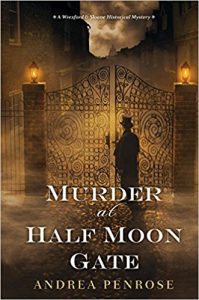 The Sherlockian overtones of Wrexford’s unemotional demeanor contrasted with Sloane’s carefully banked emotions as well as their opposition in gender and station gives this case much of its dramatic tension as well as providing plenty of opportunity for the characters to spark off each other so hard they very nearly set the scene afire. Not that there aren’t plenty of fires and even explosions of a slightly more mundane origin to deal with! They are clearly people who can’t be neutral about each other, even when they are on the same side. Where those sparks will lead them will undoubtedly be explored in the books to come, along with whatever else Sloane is hiding from both Wrexford and from herself.
The Sherlockian overtones of Wrexford’s unemotional demeanor contrasted with Sloane’s carefully banked emotions as well as their opposition in gender and station gives this case much of its dramatic tension as well as providing plenty of opportunity for the characters to spark off each other so hard they very nearly set the scene afire. Not that there aren’t plenty of fires and even explosions of a slightly more mundane origin to deal with! They are clearly people who can’t be neutral about each other, even when they are on the same side. Where those sparks will lead them will undoubtedly be explored in the books to come, along with whatever else Sloane is hiding from both Wrexford and from herself.
Plumbing the depths of Charlotte Sloane’s many, many secrets should make the subsequent books in this series every bit as riveting as this first outing. Clearly, the Wrexford & Sloane series is now on my list of comfort reads to be picked up when next the mood strikes me. I’m certain that their investigation of Murder at Half Moon Gate will pop to the top of the towering TBR pile in short order!

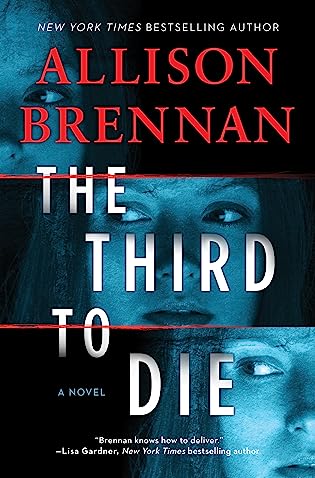 The Third to Die (Quinn & Costa #1) by
The Third to Die (Quinn & Costa #1) by 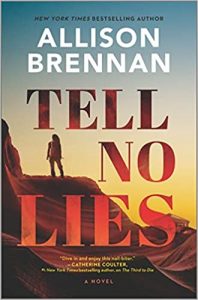 I fell hard for this compelling mystery/suspense/thriller series a couple of years ago when I got utterly absorbed in the second book in the series,
I fell hard for this compelling mystery/suspense/thriller series a couple of years ago when I got utterly absorbed in the second book in the series, 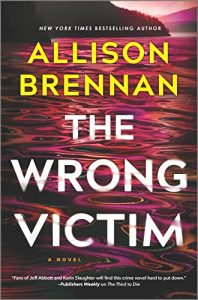 Costa needs all the help he can get. Kara needs a case to keep her mind occupied while she waits to discover what is happening with the case back in LA. And the killer is compelled to complete his self-appointed mission at all costs.
Costa needs all the help he can get. Kara needs a case to keep her mind occupied while she waits to discover what is happening with the case back in LA. And the killer is compelled to complete his self-appointed mission at all costs.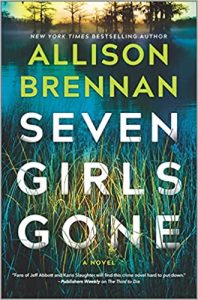 What keeps The Third to Die moving at its breakneck pace – in spite of its length – is the ticking clock the team is driven by every single minute. The Triple Killer kills on March 3, March 6, and March 9. Kara Quinn discovers the body on the morning of March 3. The team has to get from Washington DC to Washington state and hit the ground running, with less than 72 hours until the next body drops. They have no leads, no motives, no suspects. And not just one but two local jurisdictions who are less than thrilled with the FBI operating on their turf without so much as a ‘by your leave’.
What keeps The Third to Die moving at its breakneck pace – in spite of its length – is the ticking clock the team is driven by every single minute. The Triple Killer kills on March 3, March 6, and March 9. Kara Quinn discovers the body on the morning of March 3. The team has to get from Washington DC to Washington state and hit the ground running, with less than 72 hours until the next body drops. They have no leads, no motives, no suspects. And not just one but two local jurisdictions who are less than thrilled with the FBI operating on their turf without so much as a ‘by your leave’. Chef's Choice (Chef's Kiss, #2) by
Chef's Choice (Chef's Kiss, #2) by  Our story begins a few months after the end of the companion story,
Our story begins a few months after the end of the companion story, 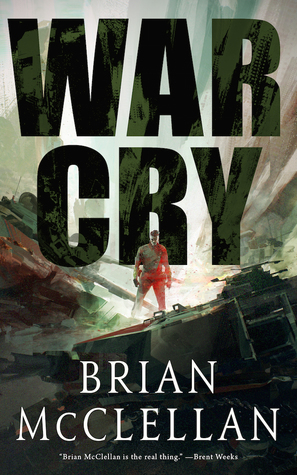 War Cry by
War Cry by 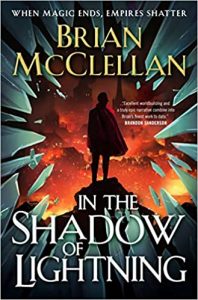 I picked this up because I adored the author’s
I picked this up because I adored the author’s 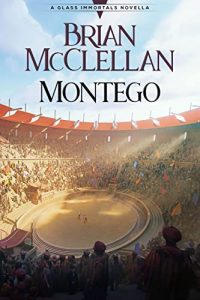 This turns out to be a story that embodies, not just Sherman’s “War is Hell” quote, but more especially a less often seen quote from G.K. Chesterton that goes, “The true soldier fights not because he hates what is in front of him, but because he loves what is behind him.” Or in the case of Teado and his company, because he loves what is beside him.
This turns out to be a story that embodies, not just Sherman’s “War is Hell” quote, but more especially a less often seen quote from G.K. Chesterton that goes, “The true soldier fights not because he hates what is in front of him, but because he loves what is behind him.” Or in the case of Teado and his company, because he loves what is beside him.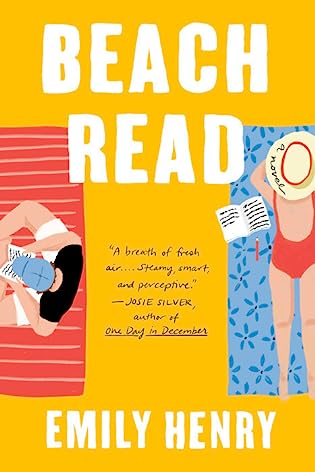 Beach Read by
Beach Read by  Beach Read has been in the virtually towering TBR pile ever since I read – and fell in love with –
Beach Read has been in the virtually towering TBR pile ever since I read – and fell in love with –  While it was a given from the outset that January and Gus were going to reach at least the kind of happy for now that both the character January AND the author usually write, what made this book interesting and different was the books that January and Gus each produced on their way to it, and how those books managed to be both a departure from their usual styles while still expressing the core parts of their personalities and their reasons for becoming writers in the first place.
While it was a given from the outset that January and Gus were going to reach at least the kind of happy for now that both the character January AND the author usually write, what made this book interesting and different was the books that January and Gus each produced on their way to it, and how those books managed to be both a departure from their usual styles while still expressing the core parts of their personalities and their reasons for becoming writers in the first place.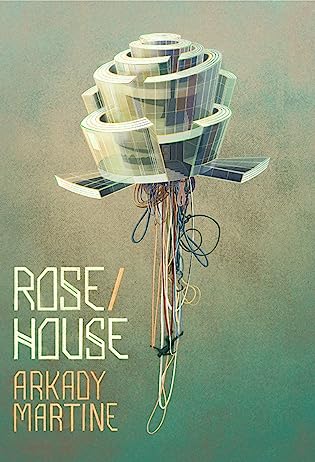 Rose/House by
Rose/House by 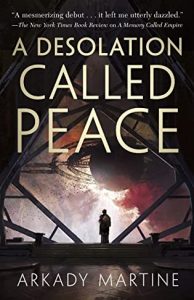 Escape Rating B-: I picked this up because I still miss Teixcalaan. (Yes, I know I said that the ending of
Escape Rating B-: I picked this up because I still miss Teixcalaan. (Yes, I know I said that the ending of 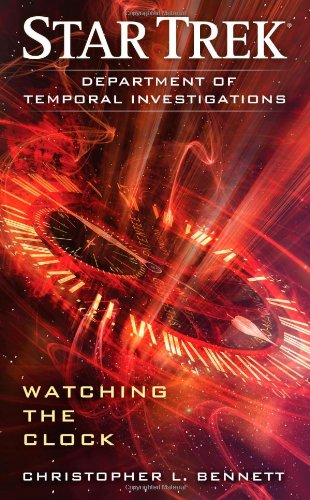 Watching the Clock (Star Trek: Department of Temporal Investigations #1) by
Watching the Clock (Star Trek: Department of Temporal Investigations #1) by 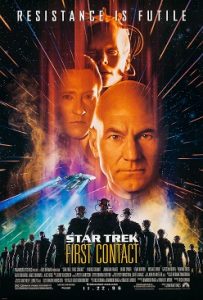 Which sounds a lot like what the Borg were attempting in
Which sounds a lot like what the Borg were attempting in  Big Trouble on Sullivan's Island (Carolina Tales Book 1) by
Big Trouble on Sullivan's Island (Carolina Tales Book 1) by 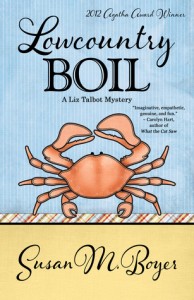 Escape Rating A-: I picked this up because I love the author’s
Escape Rating A-: I picked this up because I love the author’s 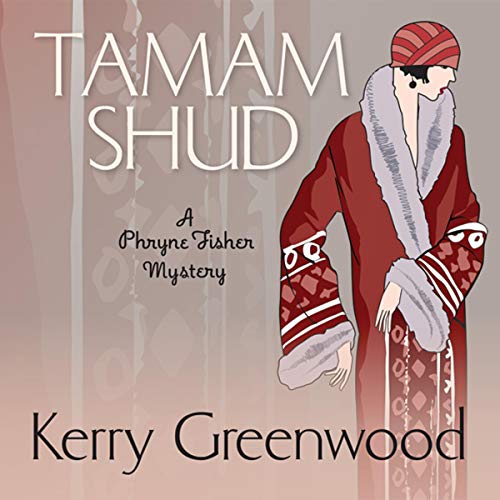 Tamam Shud: A Phryne Fisher Mystery by
Tamam Shud: A Phryne Fisher Mystery by 
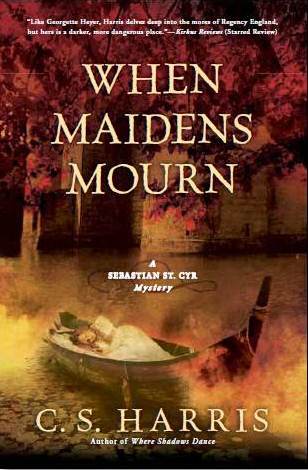 When Maidens Mourn (Sebastian St. Cyr, #7) by
When Maidens Mourn (Sebastian St. Cyr, #7) by  The legend of King Arthur has always loomed large over Britain, but even more so at times when the current monarch is less than popular. Or, as in the case of the corpulent, aging, spendthrift Prinny, Prince Regent for his mentally incapacitated father George III, not just unpopular but downright detested for his endless need for more money and therefore higher taxes to maintain his profligate lifestyle AND continue to prosecute Britain’s seemingly endless war with Napoleon and France.
The legend of King Arthur has always loomed large over Britain, but even more so at times when the current monarch is less than popular. Or, as in the case of the corpulent, aging, spendthrift Prinny, Prince Regent for his mentally incapacitated father George III, not just unpopular but downright detested for his endless need for more money and therefore higher taxes to maintain his profligate lifestyle AND continue to prosecute Britain’s seemingly endless war with Napoleon and France.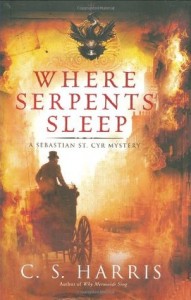 Escape Rating A+: The
Escape Rating A+: The 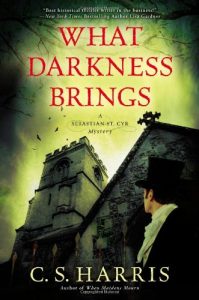 At least, it’s uncertain at this particular point in the series. I began reading St. Cyr almost 20 years ago, at the beginning with
At least, it’s uncertain at this particular point in the series. I began reading St. Cyr almost 20 years ago, at the beginning with